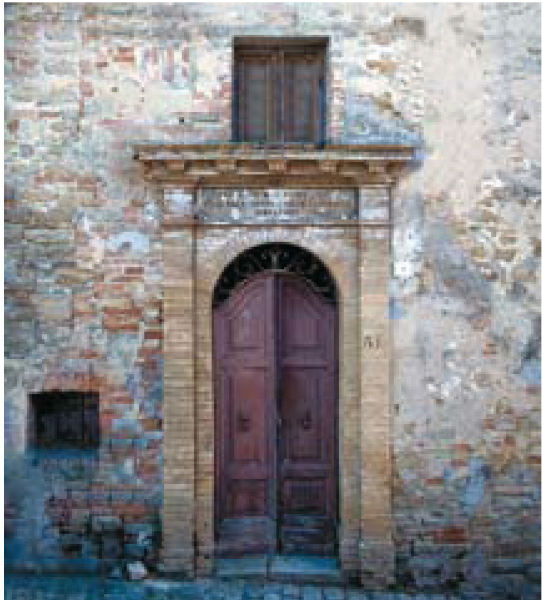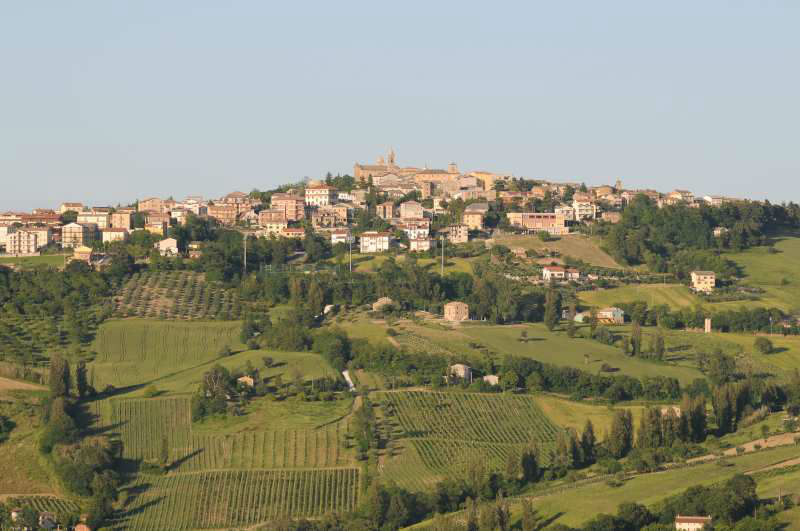
In 1841 the musician Gaspare Spontini ordered the building of this house devoted to the education of girls, as witnessed by the inscription above the main entrance.
After his death it housed the Reggenza delle Opere Pie, the Town Hall andthe Primary School.
On September 6th 1951, on the occasion of the centenary of Spontini’s death, it has been transformed into a Museum.
Here you can find some of the furniture, both hadwritten and printed scores, letters and important records.

Cupramontana was founded probably in the fourth to fifth centuries B.C. and took its name from a temple that stood there dedicated to the goddess Cupra. The town was mentioned by Pliny the Elder and Ptolemy in the Augustan age, as one of the ancient cities of Piceno, and therefore was an important town in Roman times.
Devastated during the Greek-Gothic war, the town was abandoned and its ruins were later used for the construction of firstly fortifications, and later a castle, which was built close to the ancient town but higher on the hill and which was then given the name of Massaccio. From the seventh century Massaccio was part of the Lombard Duchy of Spoleto. From the thirteenth century, Massaccio was merged into the county of Jesi becoming until its dissolution in 1808, the most important centre of the county. In the fifteenth century Massaccio was one of the strongholds of the heretical sect of the "Fraticelli"; in 1444 it was occupied by troops of Francesco Sforza and in 1517 it was looted by the militia of the Duke Francesco Maria della Rovere.
Then there followed a long period of peace, during which the town experienced strong population growth combined with cultural development. In 1747 the site of the ancient Roman town of Cupramontana was rediscovered, close to Massaccio. The discovery was made after the correct reading of an inscription on a tablet which had been discovered in 1718 in the archaeological zone. The tablet, referring to 'Cupra Montana' by its ancient name, is today visible on the council buildings.
In 1798 the French troops who had invaded the Papal States plundered the town after the people had displayed stubborn but futile resistance. By decree of Vittorio Emanuele II in 1861, Massaccio regained its ancient name of Cupramontana.

One of the most stunning natural and environmental gems in Ancona!
Located between Poggio San Marcello and Montecarotto where the stream Fossato meets its tributary forming a Y.
This natural paradise houses an ancient oil mill, wonderful waterfalls, a bush with a great variety of trees and lianas which inspire visitors with spirit of adventure.
CIS and the province of Ancona have financed the project to restore the Park whose works began in September 2004 and ended in August 2006.
Montecarotto is planning the arrangement of the road to allow a more comfortable access to the Park.
Trabocco will be easiy reached through two roads: the first one from Montecarotto and the second one from Poggio San Marcello. The old oil mill must be restored, too!
But the next natural engineering works together with a massive plantation will allow Trabocco to become a safer and charming park ! …… Not only for the locals!














